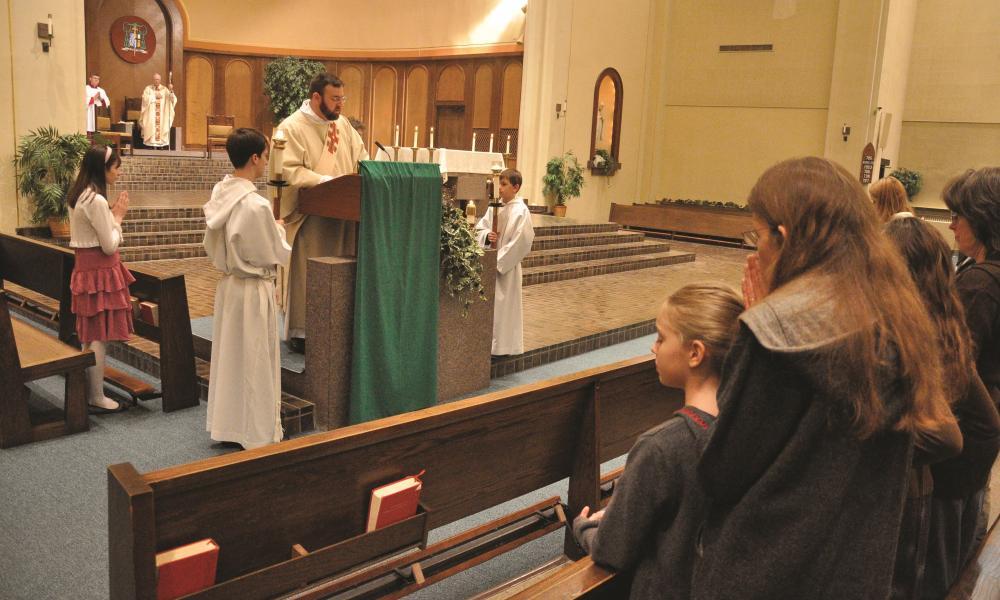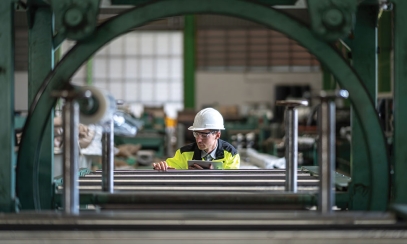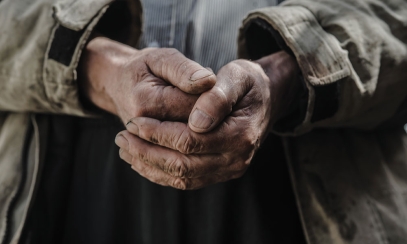
‘With Hearts and Hands and Voices’
Full, Conscious and Active Participation in the Liturgy
Full, Conscious and Active Participation in the Liturgy
On Dec.4, 1963, inspired by the Holy Spirit, the bishops of the world passed the first of 16 documents that would be promulgated by the Second Vatican Council. Sacrosanctum Concilium, the Constitution on the Sacred Liturgy, was one of the four “constitutions” which defined vital issues of church teachings and practice.
This constitution called for a reform of the liturgy. It did not mandate innovations, but restored ancient practices. It urged that “the rites be revised carefully in light of sound tradition and that they be given new vigor to meet the circumstances and needs of modern times.” (SC 4)
The constitution began with a theological review of the nature of liturgy and its role in the life of the church. (1-13) It called for the improved liturgical formation of the clergy and the faithful (15-19) and carefully detailed the principles which would guide the reform. (21-46) The chapters that followed gave specific norms for the reform of the Mass, the sacraments, the Liturgy of the Hours, the liturgical year, and more.
And in all these important efforts, what was given highest priority? What was the goal to be considered before all else? It was the full, conscious and active participation of the people in the pews!
The church earnestly desires that all the faithful be led to that full, conscious and active participation in liturgical celebrations, called for by the very nature of the liturgy. Such a participation by the Christian people … is their right and duty by reason of their baptism.
In the reform and promotion of the liturgy, this full and active participation by all the people is the aim to be considered before all else. For it is the primary and indispensible source from which the faithful are to derive the true Christian spirit …. (SC 14, emphasis added)
Indeed, that phrase, “full, conscious and active participation,” appeared no less than 31 times in the Constitution on the Sacred Liturgy. What does this phrase imply? The council envisioned that we would be participating in the liturgy with our whole mind, heart and bodies!
… Pastors must therefore realize that when the liturgy is celebrated something more is required than the mere observance of the laws governing valid and lawful celebration; it is also their duty to ensure that the faithful take part fully aware of what they are doing, actively engaged in the rite, and enriched by its effects. (11)
For centuries, the faithful “attended” or “heard” Mass in Latin. They devoutly listened as the priest recited texts in Latin. Only in the early 20th century were personal missals published to provide translations. And language was not the only barrier to participation. Frequently, the architecture itself separated us from the altar by great distances or communion rails. Often, the faithful simultaneously prayed the rosary or other devotions while Mass was being celebrated and they hungered for familiar clues like the ringing of bells.
How did the Second Vatican Council bring about our greater participation?
First, it encouraged “liturgical formation with zeal and patience.” (19) The bishops knew that we would better participate if we understood the depth of the mystery being celebrated, the structure of the Mass, and the richness of the traditions behind our current practices.
Second, they reminded us that liturgies are never private functions – they involve the whole body of the church, near and far, visible and invisible. (26) The liturgy is public and communal by its very nature, but it also concerns individual members in different orders and offices who exercise a variety of liturgical roles – bishops, priests, deacons, lectors, cantors and more.
Third, the liturgical books themselves were reformed to promote active participation. The people were given more “speaking parts” and encouraged to take part in acclamations, responses, psalmody, antiphons, and songs. (30-31) Music, especially, allowed us to give fuller expression to our prayer.
And the texts of these books were to be marked by “noble simplicity.” They were to be “short, clear, and unencumbered by useless repetitions; they [were to be] written within the people’s power of comprehension and, as a rule, not require much explanation.” (34) Most importantly, the liturgical books were to be translated into the vernacular so that the people could pray in their own language, just as they had for centuries before Trent. These translations were to be approved by each country’s conference of bishops and the Holy See.
Fourth, since we pray with our whole bodies, we participate fully, consciously and actively with postures and gestures. We kneel, we sit, we stand, we process, we bow our head, we make the sign of the cross. These common postures and gestures are a sign of our unity when we are gathered for the Sacred Liturgy – they both express and foster our intention and spiritual attitude. (General Instruction of the Roman Missal, 42)
Silence, too, is a means of participation. In silence, we recollect our sins and gather our prayers in the Introductory Rites. In silence, we reflect on the readings. In silence (or in song), we reflect on the great gift of Holy Communion. (GIRM 45)
We participate, too, simply by listening attentively to the readings and the prayers and then responding to them with “Thanks be to God” or “Amen” or other acclamations.
Too often, some will complain that they “don’t get much out of Mass.” The obvious response is “What did you put into it?” We never come to liturgy to be entertained, or worse yet, to judge the music or the homily. We are not there as strangers or silent spectators. We come together as a Christian community to encounter the living God.
The Constitution on the Sacred Liturgy (48) best describes our participation. We are “instructed by God’s word and nourished at the table of the Lord’s body, we give thanks to God by offering the immaculate Victim, not only through the hands of the priest, but also with him. We offer ourselves as well, through Christ the Mediator, so that we may be formed day by day into an ever more perfect unity with God and with each other, so that finally God may be all in all.”
by Rita Thiron
Pilgrimage destination of the month
Turin, San Giovanni Rotondo and Assisi, Italy
Every year, Catholics from around the globe travel to religiously significant locations in order to deepen their understanding and appreciation for the Catholic faith, to venerate Mary and the saints, to ask for intercessory prayers and to express gratitude. Here is just one of the many places you might want to make a pilgrimage.
Turin is a major city in northern Italy and capital of the Piedmont region. Often referred to as the “Capital of the Alps,” it is best known to Christians as the home of the Shroud of Turin, which is a linen cloth that bears the image of what is believed to be the body of the crucified Jesus Christ. It is thought that the cloth was placed on his body at the time of his burial. The Shroud is kept in the royal chapel of the Cathedral of Saint John the Baptist in Turin.
San Giovanni Rotondo is a city in southern Italy. It is best known as the home of Padre Pio from 1916 until his death in 1968. It is also renowned for the hospital and medical research center (Home for the Relief of Suffering) that Padre Pio founded.
The town of Assisi is in the Umbria region of Italy in the province of Perugia. It is the birthplace of St. Francis, who founded the Franciscan religious order in Assisi in 1208. St. Clare, the founder of the Poor Clares, also was born in Assisi.
Notables:
The Cathedral of Saint John the Baptist in Turin was built in the late 15th century. As mentioned earlier, it is the current resting place of the Shroud of Turin.
The Padre Pio Shrine at Santa Maria delle Grazie Church in San Giovanni Rotondo is a popular Catholic pilgrimage site, drawing approximately 7 million pilgrims every year. Padre Pio was a member of the Capuchin order and was known for his care of the sick and for having received the stigmata. He was declared a saint in 2002.
The Sanctuary of Saint Michael the Archangel is a Catholic shrine and sacred cave in Monte Sant Angelo near San Giovanni Rotondo. The Archangel Michael is said to have appeared there three times. It has been a Catholic pilgrimage site for centuries.
The Basilica of Santa Maria degli Angeli (St. Mary of the Angels) is located in Assisi and encloses the 9th century little church, the Porziuncola. It was at the Porziuncola that St. Francis realized his vocation and founded the Franciscan order. The basilica also is home to the Chapel of the “Transito” where St. Francis died in 1226.



